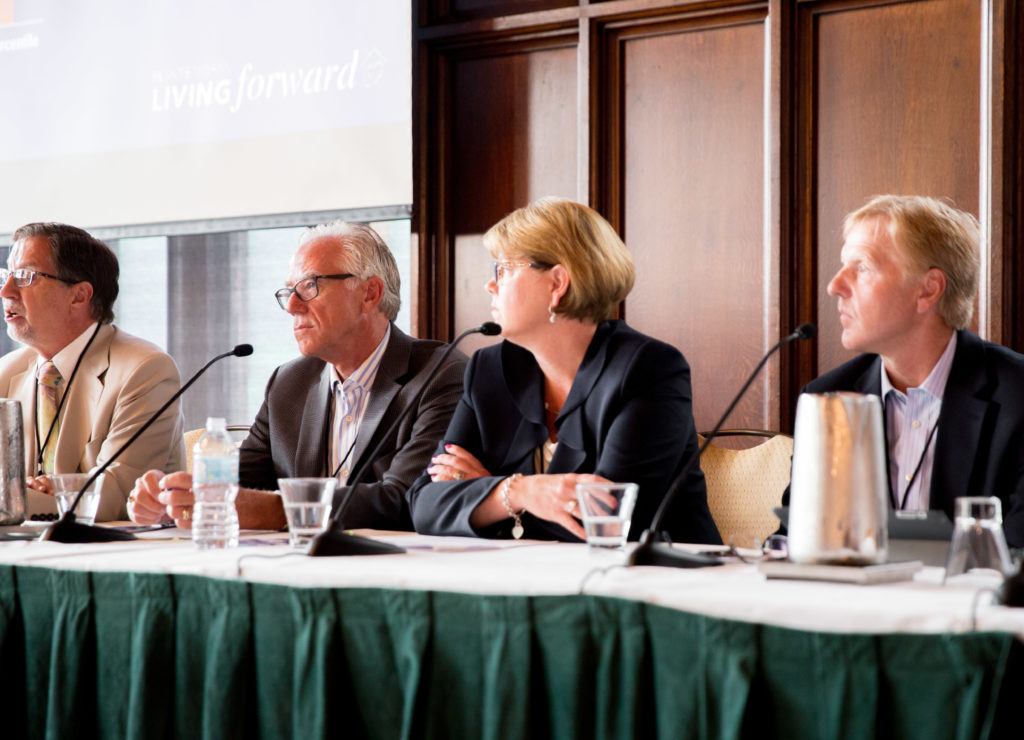The need in senior living for a middle-income price point is growing, as the reality of the demographics coming down the pike is alarming and impossible to ignore.
By the year 2036, 40% of people over age 62 are projected to have assets of $25,000 or less, and 20% are expected to have $5,000 or less in assets, according to figures presented by Plante Moran Living Forward at the 2016 Senior Housing News Chicago Summit on July 14.
By 2040, the number of those age 85 and up is expected to triple to 14.6 million, meaning there will undoubtedly be a need for senior housing that’s more affordable for the middle-income population.
“We need to make sure we’re thinking far enough ahead to build the communities affordable for them,” Plante Moran Vice President Jamie Timoteo said during a discussion on the middle-income senior housing market.
Being prepared to successfully develop and operate middle-market senior housing is crucial, and this requires different planning techniques than the most prevalent private pay communities.
1. Focus on value: Developing for middle-income seniors requires a whole new mindset, said Rick Banas, vice president of development and positioning at Bradley, Illinois-based Gardant Management Solutions, which develops and manages assisted living and memory care communities. This means focusing on value rather than over-the-top luxury, and sticking to the budget—period.
First and foremost, initial costs must be considered. If the the price tag on the land is above $1.2 million, then it becomes difficult to make a project work financially, Banas said. That’s especially true when property taxes and the construction cost of the community itself are factored in, as the cost to residents would go up just to break even.
Staffing, technology and other fees should be rolled into the pro forma, as well.
“If one of those factors shifts one way or the other, something else has to give,” said Ward Isaacson, president at Pope Architects, a full-service design firm serving senior living, health care and various other clients. He suggests getting everyone involved in a given development at the table from the start, because it doesn’t make sense to design and price, only to redesign and price again. That way, everyone can work toward a price point together.
For middle-market senior housing, Isaacson suggested costs of $95 to $105 per square foot. Across the board, he said the bottom line is to pull the costs 15% to 20% down from the higher end, which tends to range from $120 to $180.
“Remind yourself—who are we really serving?” Isaacson said. “You have to have a mission from the very beginning.”
2. Change design convictions: Private pay senior housing has been trending toward elaborate designs, luxurious touches and vast units. To effectively develop middle-market senior housing, there needs to be a shift in design elements and room setup.
Use placemats instead of white tablecloths, for example, and avoid buying fresh flowers every day. Look at different types of doors or windows that might be cheaper, as well. Small changes like these can make a significant impact on month-to-month and upfront costs alike. Additionally, including studio apartments that measure about 325 to 340 square feet can boost affordability for the consumer as well as the operator.
“We don’t believe in the big chandelier and big staircase,” said Neil Kraay, President and CEO at Leisure Living, a Grand Rapids, Michigan-based provider with a middle-market focus. “We want to create home-like environments, making it as comfortable as possible.”
Otherwise, flexible spaces are key, Banas said, as are creative approaches to meeting residents wants as well as their needs. For example, a community of his in Decatur, Illinois has an arrangement with the local YMCA for residents to use the facilities there, meaning there’s no need for a swimming pool at the community itself. The dining room can be used as a multi-purpose room, and instead of a theater room, simply establish a gathering space that can be used to screen movies if desired.
Certain design elements can make a difference when it comes to operational efficiencies, as well, Isaacson said. Implementing a centralized kitchen, for instance, might cut a full-time employee from the pro forma, which would be a huge saving.
Still, every community should prioritize having a “wow” feature, and do the best possible with the rest of the space based on the budget, Isaacson said.
3. Adjust financial return expectations: For Banas, maintaining a census consisting of private pay and waivers makes for average monthly fees of about $2,800 in Southern Illinois and $3,300 per month around Chicago. As such, occupancy plays an even more significant role in financial returns with middle-income senior housing.
“If you’re able to achieve 93% occupancy, that’s where significant revenue starts dropping to the bottom line,” Banas said.
Some states, like Illinois and Minnesota, have waiver programs that to help fund services like those rendered at an assisted living community. Operators must factor in payment cycles, rate adjustments and approval periods when anticipating return on investment (ROI), too.
Starting small is another approach to bolstering a healthy ROI, Kraay said. He typically begins conservatively with a medium-sized community of 24 to 40 units, and plans to add on more as the market dictates.
Right now, there’s no one tried and true method to tackle the middle-income senior housing market, but the conversation must continue if the industry wants to address the demand for this type of product.
“We don’t have all the answers, but what we haven’t done is have the conversation, and we need to keep having the conversation,” Plante Moran Living Forward Principal Dana Wollschlager said.
Written by Kourtney Liepelt




